Yet within decades, Virginia codified a system of permanent racialized slavery that would shape its economy, society, politics, and future conflicts for centuries. Virginia did not just participate in the system of slavery—it defined it, refined it, and exported it both ideologically and through the human trafficking of Black bodies across the American South.
The Virginia slave economy was anchored in tobacco, which quickly became the colony’s most lucrative cash crop. The rise of tobacco plantations required an immense labor force, which was initially met through indentured servitude, including poor English and Irish migrants. But by the late 17th century, slavery had overtaken indentured servitude as the primary labor system.
The 1662 law that made children inherit the status of their mother—thus codifying hereditary slavery—set the precedent that racial enslavement would be perpetual. The commodification of enslaved Africans turned Virginia into a marketplace of human suffering. Enslaved people cleared forests, built homes, and cultivated not only tobacco but later wheat, hemp, corn, and cotton. From Tidewater plantations to the hills of the Piedmont, the economy of Virginia bled Black labor into every facet of its prosperity.
The slavery industrial complex in Virginia was not merely agricultural. Virginia became a major hub for slave breeding and domestic trade after the transatlantic slave trade was outlawed in 1808. This internal slave trade made Richmond one of the most important slave markets in the South. Thousands of enslaved people were sold each year from Virginia plantations to emerging cotton states such as Alabama, Mississippi, Louisiana, and Texas.
The destruction of Black families was central to this system, as women were forcibly impregnated and children were ripped from their mothers’ arms to meet the insatiable demand of slaveholders in the Deep South. Slave pens and jails dotted the landscape of cities like Richmond and Alexandria, where auction blocks facilitated the financial lifeblood of white society. Enslavers in Virginia profited not just from crops but from the reproduction and sale of human beings.
As slavery became further entrenched, Virginia helped build and sustain the ideological and legal underpinnings of white supremacy. Slave codes in the colony, and later the state, became increasingly restrictive and violent. By the early 18th century, laws prohibited enslaved people from gathering in groups, learning to read and write, testifying in court, or defending themselves from violence.
These laws turned violence into a state-sanctioned tool of discipline, and their very structure reinforced white fears of rebellion. In response to Gabriel Prosser’s 1800 planned slave revolt, the state executed more than two dozen enslaved people and passed laws further restricting Black mobility. The rebellion never took place due to betrayal and stormy weather, but it deeply alarmed the white elite. Virginia’s legal framework thus functioned not merely as a tool of enforcement but as a declaration of systemic dehumanization.
Presidents from Virginia embodied this contradiction of democracy and slavery. George Washington, Thomas Jefferson, James Madison, and James Monroe—founding fathers all—were slaveholders. Washington owned 123 enslaved individuals at the time of his death in 1799. Jefferson, the author of the Declaration of Independence, owned over 600 people during his lifetime and fathered children with Sally Hemings, a woman he enslaved.
Madison owned over 100 enslaved people, while Monroe held between 30 and 40. These men, who preached liberty and authored sacred texts of freedom, also trafficked in human beings. Their plantations—Mount Vernon, Monticello, Montpelier, and Highland—were not just homes but microcosms of the larger system of bondage. The ideological schizophrenia of liberty for white men and slavery for Black people permeated Virginia’s culture and left a stain on its revolutionary narrative.
Slave migration patterns further reveal Virginia’s central role in the expansion of slavery across the South. As soil exhaustion and shifting market demands changed agriculture in Virginia, enslaved people were sold or forced to migrate to the Deep South. It is estimated that over one million enslaved people were relocated through the domestic slave trade between 1790 and 1860, and Virginia was the largest exporter. This internal diaspora severed kinship networks and caused irreparable psychological trauma. Black families in Virginia lived in constant fear of being sold south, often with only minutes’ notice. This trauma rippled for generations, embedding a legacy of displacement and loss in African American memory.
The institutional beneficiaries of slavery in Virginia are still visible today. Many of the state’s leading colleges and corporations were built upon or benefited from the wealth created by enslaved labor. The University of Virginia, founded by Thomas Jefferson, was constructed by enslaved workers. The College of William & Mary used enslaved labor and was financed by donations from slaveholding families.
Virginia Military Institute’s early students and staff included Confederate generals who defended slavery as a moral good. These institutions have only recently begun to publicly reckon with their origins. Additionally, insurance companies, banks, and railroads that operated in Virginia profited from slavery directly or through collateral based on enslaved bodies. Modern descendants of these entities remain integral parts of the state’s economic and political structure, profiting from the residual advantages of stolen labor.
Narratives from enslaved people in Virginia offer first-hand accounts of survival, resistance, and humanity under inhumane conditions. The WPA Federal Writers’ Project in the 1930s preserved some of these voices. Lucy Brown, formerly enslaved in Virginia, spoke of the cruelty of being whipped and the deep hunger endured daily. Henry Banks recalled being sold on the auction block like livestock, stripped of all dignity. Enslaved women like Harriet Jacobs, who although born in North Carolina had deep Virginia connections, wrote about the sexual violence and degradation they experienced. These narratives dismantle the romantic myths of benign slavery perpetuated by Lost Cause ideology and replace it with the raw, unfiltered truth of brutality and exploitation.
The Freedmen’s Bureau attempted to provide relief, education, and legal aid to freed Black people after the Civil War. In Virginia, the Bureau set up schools, reunited families, and intervened in labor disputes, often in the face of white resistance. Freedpeople sought land ownership and autonomy, but the failure of Reconstruction allowed white supremacy to reassert itself through Black Codes, voter suppression, and racial terror. The Ku Klux Klan and other white vigilante groups emerged in Virginia, enforcing racial hierarchy with violence. Freedmen in Virginia’s urban centers and rural enclaves fought to build churches, schools, and mutual aid societies as means of survival and empowerment, but their efforts were often stifled by structural racism.
Virginia was also home to Black abolitionists who resisted slavery in word and deed. Henry Highland Garnet, born in slavery in New Market, Virginia, escaped to freedom and became one of the most militant voices in the abolitionist movement. He urged enslaved people to rise up in rebellion and was among the first African Americans to address Congress. Dred Scott, whose case would inflame national tensions, had ties to Virginia through his extended family and their slaveholders. John Mercer Langston, born free in Virginia, became the first Black man elected to public office in the United States and helped found Howard University’s law department. These freedom fighters disrupted the notion that African Americans were passive victims, asserting their agency in the fight for justice.
During the Civil Rights Movement, Virginia was a battleground. The state employed “Massive Resistance” strategies to defy the Brown v. Board of Education decision. Prince Edward County infamously closed its public schools from 1959 to 1964 rather than integrate, depriving thousands of Black children of an education. Despite this, Black Virginians fought on. Leaders like Barbara Johns, who at just 16 led a student strike for better school conditions, became icons of resistance. NAACP lawyers like Oliver Hill, who helped argue Brown, were Virginia-born and committed to dismantling Jim Crow. The civil rights laborers of Virginia faced job loss, violence, and arrest, but they pushed forward, laying the foundation for modern movements demanding equity and justice.
The history of Virginia is also intertwined with the Trail of Tears and the Indian Removal Act of 1830. Though the forced relocations primarily affected Native American nations in the Southeast, Virginia played a role in the broader context of settler colonialism. Some Virginia-based politicians, including President Andrew Jackson’s supporters, championed removal as necessary for “civilization” and white expansion. The land seized from Native peoples would be converted into slaveholding plantations, and the forced migration of both Native and Black people reveals the shared dispossession at the heart of American empire-building. Enslaved Africans and displaced Indigenous communities both suffered under the same racialized, expansionist ideology that defined early American policy.
Virginia’s legacy of slavery continues to reverberate today in wealth disparities, incarceration rates, educational gaps, and residential segregation. Confederate monuments, many of which were erected during the Jim Crow era, long symbolized white domination. Though some have been removed in recent years, the cultural scars remain. A complete reckoning requires more than symbolic gestures; it requires reparative action, historical education, and a dismantling of the systems that continue to advantage the descendants of enslavers while punishing the descendants of the enslaved. Virginia, as the ideological and operational heart of American slavery, holds a unique responsibility to tell the truth and repair the harm. Its soil is rich not only with the crops grown through stolen labor but also with the blood, sweat, and spirit of those who refused to be broken.
The mechanisms of white supremacy in Virginia following the end of formal slavery did not collapse but evolved. As Reconstruction gave way to Redemption, the former Confederate elite clawed back political and economic power with the assistance of the federal government’s waning interest in Black rights. The Compromise of 1877 effectively ended Reconstruction, and in its aftermath, Virginia intensified efforts to reassert racial control through legislation and violence.
The Black Codes—initially passed during Reconstruction—were refined into a statewide Jim Crow system that imposed segregation in schools, transportation, public accommodations, and employment. These laws criminalized Black existence, using vagrancy, loitering, and breach of contract statutes to funnel thousands into the convict lease system. This system mirrored slavery in form and function: prisoners, often arrested on fabricated charges, were leased out to private companies, forced to labor under grueling and inhumane conditions. Virginia’s penal farms and railroads were built upon the backs of these unjustly imprisoned African Americans.
Many of the railroads, canals, and highways that still form the backbone of Virginia’s infrastructure were either built by or directly benefited from enslaved labor and post-slavery convict leasing. The Virginia Central Railroad, which evolved into the Chesapeake and Ohio Railway, relied on enslaved laborers before the Civil War and benefited from their forced toil. The same can be said of the James River and Kanawha Canal Company, whose construction saw widespread use of enslaved workers in the 19th century. These projects did not merely facilitate commerce—they entrenched the spatial and economic hierarchies that divided white and Black Virginians. The wealth generated from these transportation systems enriched white families and businesses for generations, while Black workers, free or enslaved, were denied ownership, agency, or compensation.
Even after emancipation, the struggle of Black Virginians to gain economic independence was met with fierce opposition. The denial of land during and after Reconstruction condemned many formerly enslaved people to sharecropping and tenant farming. These systems were exploitative by design: landlords provided land, tools, and seed, and in return demanded an outsized share of the crop, often using inflated debts and fraudulent bookkeeping to keep Black families in a cycle of poverty and dependency. In Virginia, this arrangement flourished in tobacco and cotton-growing regions, where the legacy of slavery was perpetuated in all but name. The landscape of the rural South bore testimony to a new kind of bondage—one without chains but enforced by hunger, debt, and racial terror.
Despite these obstacles, Black communities in Virginia demonstrated extraordinary resilience and ingenuity. Freedpeople founded towns such as Ettrick, Unionville, and Hobson, establishing churches, schools, fraternal organizations, and businesses. These spaces were havens of Black autonomy and pride. Educational institutions such as Hampton University (founded in 1868) and Virginia State University (established in 1882) became pillars of Black advancement.
These historically Black colleges and universities (HBCUs) not only provided academic instruction but also cultivated leaders, intellectuals, and activists who would later shape national movements. However, even these beacons of progress were constrained by segregationist policies and unequal funding. Black teachers and students labored under the shadow of systemic deprivation, forced to do more with less, and often taught from hand-me-down textbooks discarded by white schools.
Throughout the early 20th century, Virginia remained a stronghold of segregationist ideology. The 1902 Virginia Constitution disenfranchised most Black voters through poll taxes, literacy tests, and complex registration procedures. Black political power, so briefly kindled during Reconstruction, was extinguished for decades. Legal and extralegal violence enforced this power imbalance. Lynchings, although less frequent than in some Southern states, were still a brutal reality in Virginia.
Between 1882 and 1968, at least 100 documented lynchings occurred, often with the complicity or outright participation of law enforcement and white community leaders. These acts of racial terror served to police the boundaries of Black behavior and reinforce white supremacy. Victims were frequently accused without evidence and denied due process, their bodies left hanging from trees or burned in public displays of white dominance.
The emergence of Black-led civil rights activism in Virginia during the early-to-mid 20th century was not sudden—it was the result of decades of organizing, resistance, and endurance. Long before the national spotlight turned to Selma or Birmingham, Black Virginians were fighting in courtrooms, school boards, and picket lines. The NAACP Legal Defense and Educational Fund, heavily staffed and supported by Virginian lawyers and activists, played a key role in landmark civil rights cases. Oliver Hill and Spottswood Robinson, two of the most prominent figures in the legal fight against segregation, hailed from Virginia. Together they challenged school segregation, wage discrimination, and voting disenfranchisement. Their work laid the foundation for the Brown v. Board of Education decision, which declared school segregation unconstitutional.
Nowhere was Virginia’s resistance to integration more apparent than in Prince Edward County. After the Brown decision in 1954, white officials in the county refused to desegregate. Instead, they shut down the entire public school system from 1959 to 1964. White families established private academies for their children, while Black children were denied formal education for five years. Some were sent to live with relatives in other states, but many simply went without schooling, a deliberate act of generational sabotage. The legacy of Prince Edward County’s “Massive Resistance” strategy scarred a generation of Black Virginians, revealing the depths to which white supremacy would go to maintain its grip.
In parallel with civil rights litigation, labor movements among Black workers in Virginia also challenged the racial and economic status quo. Black tobacco workers in Richmond and Danville staged strikes for fair wages and safer working conditions. Domestic workers, long excluded from labor protections, organized unions and mutual aid societies to defend their dignity and rights. These struggles often went unrecognized in national histories, but they were vital expressions of Black agency. Virginia’s Black working class fought not only for racial justice but for class justice, revealing the intersectional nature of their oppression and resistance.
During World War II and in the decades that followed, Black Virginians enlisted in the military, worked in defense industries, and participated in the migration from rural to urban areas. The war offered a glimpse of economic opportunity and a sense of patriotic service, but it also exposed the contradictions of fighting for freedom abroad while being denied basic rights at home. Black veterans returned determined to dismantle Jim Crow.
They founded local chapters of the Urban League, the Congress of Racial Equality (CORE), and other organizations that demanded change. However, they also encountered new forms of segregation and redlining in cities like Norfolk, Richmond, and Roanoke. Federal housing programs systematically denied loans to Black applicants or steered them into segregated neighborhoods. White flight, disinvestment, and urban renewal projects (which often demolished Black neighborhoods in the name of progress) reinforced the geographic apartheid of Virginia’s cities.
Even as overt racial barriers began to fall in the latter half of the 20th century, systemic inequality persisted. The prison-industrial complex became a new frontier of racial control. Virginia's Black population has long been disproportionately represented in the state's prisons and jails. The war on drugs, combined with over-policing and discriminatory sentencing, devastated Black communities. Black youth in Virginia were more likely to be suspended, expelled, or incarcerated than their white peers. These disparities did not emerge in a vacuum—they were the legacy of centuries of racialized policy, policing, and power.
Virginia’s connection to U.S. slavery also intersects deeply with its involvement in Native American dispossession, particularly during and after the Indian Removal Act of 1830. While the bulk of Indian removal focused on southeastern tribes like the Cherokee, Chickasaw, Choctaw, Muscogee, and Seminole, Virginia’s Indigenous peoples, such as the Pamunkey and Mattaponi, also experienced land seizures, forced assimilation, and racial reclassification. In the 20th century, Virginia’s Racial Integrity Act of 1924 sought to eliminate Indigenous identity by enforcing the “one-drop rule” and classifying nearly all nonwhite people as “colored.”
This act, enforced by eugenicist Walter Plecker, erased the legal identity of many Native Virginians and served to eliminate their claims to land, heritage, and nationhood. The genocidal logic of slavery and Native removal were not separate—they were two arms of the same colonial project to create a white-dominated republic.
Meanwhile, Virginia politicians and institutions perpetuated myths of benevolent slavery and the Lost Cause. Confederate monuments littered the state, particularly in Richmond, the former capital of the Confederacy. These statues were not neutral historical markers; they were declarations of white triumph and Black subjugation. Most were erected between 1890 and 1920, during the height of Jim Crow and the resurgence of white supremacist violence. They stood for generations as public affirmations of the ideology that justified slavery, lynching, and segregation. Their removal in the wake of George Floyd’s murder in 2020 marked a symbolic but insufficient reckoning with Virginia’s racist past.
Modern corporations and universities in Virginia are beginning to acknowledge their historical ties to slavery, but many still fall short of meaningful reparative justice. The University of Virginia has issued formal apologies, installed memorials, and released reports detailing the role of enslaved labor in its construction and operation. Yet calls for reparations, scholarships for descendants of the enslaved, or land return to Black communities remain largely unfulfilled. Other universities, such as William & Mary and Virginia Tech, have also embarked on similar projects of institutional reflection but face criticism for the slow pace and limited scope of their efforts. The state’s business sector, which inherited and profited from a slave-based economy, remains structurally unequal, with Black-owned businesses underrepresented and underfunded relative to their white counterparts.
Today, the descendants of enslaved people in Virginia continue to grapple with the legacy of slavery in material and spiritual ways. Generational wealth disparities are vast. White families in Virginia have ten to twenty times more wealth, on average, than Black families, due in large part to the exclusion of Black Virginians from homeownership and economic opportunity in the 20th century. Health disparities are similarly alarming: Black Virginians suffer higher rates of infant mortality, chronic disease, and inadequate access to healthcare. Education gaps, food insecurity, environmental racism, and underemployment all trace their roots back to the slave economy that defined Virginia’s earliest centuries.
But the story of slavery in Virginia is not only one of suffering—it is one of survival, resistance, and transformation. The spiritual practices, music, art, and intellectual traditions of Black Virginians created a counterculture of freedom amid bondage. From the sorrow songs sung in the fields to the sermons preached in brush arbors, from the clandestine schools of enslaved teachers to the protests of student activists, Black Virginians forged a cultural and moral universe that rejected the terms of their oppression. Their descendants carry this legacy forward, demanding not just recognition but justice, not just apology but transformation.
As the 21st century unfolds, the legacy of slavery in Virginia remains deeply embedded in the state’s political, educational, cultural, and social structures. In recent years, movements for racial justice have pushed the state to confront its past with renewed urgency. Yet while symbolic measures—such as the removal of Confederate monuments and renaming of buildings—represent a shift in public acknowledgment, they do not by themselves dismantle the systems of inequality built atop the foundations of slavery. The ghost of bondage haunts courtrooms, classrooms, corporate boardrooms, and city streets, echoing the cries of generations of enslaved people whose labor built the commonwealth and whose descendants continue to be marginalized by that legacy.
A significant area where this legacy persists is education. While Virginia is home to some of the nation’s oldest and most prestigious universities, including the University of Virginia and the College of William & Mary, these institutions were deeply implicated in slavery from their inception. The University of Virginia, designed by Thomas Jefferson, was built by enslaved workers who quarried the stone, fired the bricks, and laid the foundations of a university intended to serve white sons of the planter elite. William & Mary enslaved people for nearly 170 years and received endowments derived directly from slaveholding and the profits of the transatlantic and domestic slave trade. These universities used Black bodies as instruments to construct spaces of white enlightenment while denying those same individuals the right to read or write.
In recent decades, these institutions have launched initiatives to study and publicize their ties to slavery. Commissions and research projects have uncovered extensive documentation of enslaved laborers—many of them unnamed—who built, maintained, and serviced the campuses. Memorials and exhibits have been created to honor their memory, and some universities have offered public apologies. Yet while this growing institutional awareness is an important first step, critics argue that it falls far short of what justice requires. Naming a building or issuing a report does not undo centuries of theft and exploitation. Reparations—whether in the form of scholarships for descendants, land redistribution, or economic investment in historically Black communities—remain largely unrealized.
Virginia’s public K–12 education system also carries the imprint of slavery’s legacy. For over a century after emancipation, Black children in Virginia were educated in underfunded, segregated schools. The curriculum often ignored or whitewashed the horrors of slavery, presenting a sanitized version of history that glorified Confederate generals and minimized the atrocities committed against enslaved people. It was not uncommon for textbooks to refer to enslaved Africans as “workers” or to imply that slavery was a benign or civilizing force. The consequences of this miseducation are far-reaching. Generations of Virginians—Black and white alike—were taught distorted versions of their past, fostering ignorance, denial, and the perpetuation of racial stereotypes.
Although court rulings and legislation have outlawed de jure segregation, de facto segregation remains entrenched. School districts in Virginia remain starkly divided along racial and economic lines, a result of residential segregation, income inequality, and district zoning practices. Black students are more likely to attend under-resourced schools, be taught by inexperienced teachers, and face disciplinary action for minor infractions. These patterns are not accidental—they are the long shadow of slavery, compounded by the systemic exclusion of Black Virginians from opportunity and protection.
The health disparities experienced by Black Virginians today are another manifestation of slavery’s enduring grip. Enslaved people were subjected to medical experimentation without consent, denied care, and worked to the point of physical collapse. These abuses did not end with emancipation. In the 20th century, Black women in Virginia were subjected to forced sterilizations under the state’s eugenics program, often without informed consent or due process. Many of these procedures were carried out under the guise of protecting society from “undesirable” reproduction, a pseudoscientific ideology that viewed poverty and Blackness as hereditary defects.
This legacy of medical abuse, combined with ongoing discrimination in healthcare, has fostered deep distrust of the medical establishment among Black communities. Today, Black Virginians experience higher rates of chronic illnesses, maternal mortality, and infant death. They are less likely to have access to quality healthcare, health insurance, and culturally competent providers. These disparities are not the result of genetics or lifestyle choices—they are structural, arising from the compounding effects of poverty, environmental racism, food deserts, and centuries of neglect and exploitation.
Housing discrimination is another cornerstone of racial inequality rooted in Virginia’s slaveholding past. After emancipation, Black Virginians struggled to acquire land and build communities in the face of white hostility, legal barriers, and economic sabotage. Those who succeeded were often targeted by racist mobs or driven out by economic deprivation.
In the 20th century, redlining, racial covenants, and exclusionary zoning reinforced residential segregation. Black neighborhoods were systematically denied access to mortgages, insurance, and public investment. Urban renewal projects in cities like Richmond and Norfolk often destroyed thriving Black communities under the pretext of development. Highways were deliberately routed through Black neighborhoods, displacing families and severing community ties. Public housing policies concentrated poverty in segregated high-rise buildings, creating conditions ripe for social and economic decay.
These patterns continue into the present. Black Virginians are more likely to live in neighborhoods with failing infrastructure, inadequate public services, and exposure to environmental hazards. They are more vulnerable to eviction, foreclosure, and displacement due to gentrification. Meanwhile, white wealth—accumulated through generations of property ownership, employment access, and systemic advantage—continues to grow. The racial wealth gap in Virginia is staggering and reflective of a broader national trend. Slavery stole the labor and bodies of Black people; its legacy continues to rob their descendants of safety, stability, and opportunity.
The legal system in Virginia, from slavery through today, has operated as a mechanism of racial control. During slavery, the law defined Black people as property and denied them legal personhood. After emancipation, new laws were crafted to criminalize Blackness. Vagrancy laws, apprenticeship laws, and other Black Codes allowed the state to re-enslave freedpeople under different guises. These laws evolved into mass incarceration, with Black Virginians disproportionately targeted for arrest, prosecution, and imprisonment.
One of the most enduring tools of racialized punishment has been the felony disenfranchisement law. For much of the 20th and 21st centuries, Virginia had one of the strictest disenfranchisement laws in the country, permanently stripping voting rights from those convicted of felonies—disproportionately Black men. This law had its roots in the post-Reconstruction effort to suppress Black political power and remains a major barrier to democratic participation. While recent governors have restored voting rights to many, the policy continues to generate controversy and reflects the enduring effort to marginalize Black voices.
The cultural memory of slavery in Virginia is also contested terrain. For much of the 20th century, the narrative of slavery was shaped by white supremacist ideology. The Lost Cause myth glorified the Confederacy as noble and slavery as a benevolent institution. Textbooks, public memorials, and state celebrations reinforced this version of history. Black voices, by contrast, were silenced or marginalized. It was not until the late 20th century that a concerted effort emerged to reclaim and elevate Black narratives. Scholars, artists, and activists have worked to expose the truths of slavery, to name the nameless, and to tell the stories of resistance, survival, and transformation.
Sites like Monticello, Mount Vernon, and the Whitney Plantation have increasingly incorporated the histories of enslaved people into their programming. Historical reenactments and museum exhibits have begun to center Black perspectives. Yet this effort is uneven and often met with resistance. In some cases, descendants of enslaved people have had to fight for inclusion, authenticity, and respect. Memory, like justice, must be fought for—and in Virginia, the battle over historical narrative is inseparable from the broader struggle for racial equality.
Grassroots efforts to preserve Black history and advocate for reparations have gained momentum in recent years. Organizations such as the Virginia Black History Month Association, the Descendants of Enslaved Communities at UVA, and local historical societies have pushed for acknowledgment, education, and material redress. In some municipalities, resolutions have been passed to study reparations or create commissions to examine racial equity. These efforts represent a growing awareness that slavery’s legacy cannot be addressed with symbolic gestures alone—it demands structural change.
Yet resistance to these efforts remains strong. White backlash, coded in the language of colorblindness or historical revisionism, seeks to undermine efforts at racial reckoning. School boards and legislators debate the teaching of “divisive concepts,” a euphemism often used to reject curricula that confront racism and slavery honestly. Efforts to ban books, limit diversity programs, or redefine history are not new—they are the continuation of a centuries-long effort to maintain the moral authority of whiteness. To truly confront the legacy of slavery in Virginia, the state must resist these efforts and commit to an honest and unflinching account of its past.
The legacy of slavery in Virginia is not confined to the state’s borders. Because Virginia was the ideological and operational center of American slavery, its influence shaped the national experience. Enslaved people sold from Virginia populated the cotton fields of Mississippi, the sugar plantations of Louisiana, and the rice paddies of South Carolina. Virginia’s legal codes influenced other Southern states. Its presidents set national policies. Its thinkers—both abolitionist and pro-slavery—shaped the debates that led to the Civil War. To understand American slavery, one must understand Virginia; to address national racial injustice, one must look to Virginia’s history and its present.
The descendants of enslaved Virginians have not only survived—they have built. They have forged communities, created art, produced scholarship, led movements, and demanded justice. Their legacy is one of brilliance and resilience in the face of calculated dehumanization. The fight for freedom in Virginia did not end with emancipation—it continues in courtrooms, classrooms, neighborhoods, and legislative halls. It is a struggle against a legacy that was centuries in the making, and one that will require just as much resolve to undo.
The story of slavery in Virginia cannot be told solely through the lens of suffering; it must also highlight resistance, endurance, and the enduring spirit of those who defied a world bent on their subjugation. From the very beginning of bondage, enslaved people in Virginia fought for their humanity. They resisted through open rebellion, covert sabotage, escape, and the quiet dignity of survival. They formed families, practiced faith, preserved African traditions, and built a moral community under conditions designed to extinguish all hope. Every prayer whispered in secret, every forbidden word taught to a child, every act of self-affirmation was a radical declaration of being in a society that declared them nothing more than property.
Virginia was the site of some of the most significant uprisings and plots in American slavery. In 1800, Gabriel Prosser, an enslaved blacksmith in Richmond, organized a massive rebellion that aimed to seize the city, take the governor hostage, and negotiate the end of slavery. Inspired by the ideals of the American Revolution and the Haitian Revolution, Gabriel believed in the natural rights of all people. Though the plot was foiled by betrayal and a storm that washed out the roads, its scope and sophistication struck fear in the hearts of Virginia’s ruling class. The state's brutal response—executing Gabriel and many of his followers—was meant to crush the spirit of revolt. Yet it also revealed that enslaved people were thinking politically, organizing secretly, and dreaming dangerously.
In 1831, Nat Turner, a deeply religious preacher from Southampton County, led the most well-known slave rebellion in American history. Turner and his followers killed more than 50 white people before the uprising was violently suppressed. The response was swift and savage: white militias and mobs killed over 200 Black people, most of whom had no connection to the revolt. The state then passed even more restrictive laws governing Black assembly, literacy, and movement. Yet Turner’s rebellion echoed through history, influencing abolitionists and enslaved people across the South. His name would become synonymous with resistance, and his actions would fuel both white terror and Black hope.
The legacy of these rebellions was a tightening of the legal and physical bonds of slavery, but also an intensified desire for liberation among the enslaved. For every open revolt, there were hundreds of quiet acts of defiance: breaking tools, working slowly, feigning illness, stealing food, aiding fugitives, and maintaining families under threat of separation. The Underground Railroad in Virginia was active and effective, aided by free Black communities, sympathetic Quakers, and determined fugitives who risked their lives to lead others to freedom. The geography of Virginia, with its rivers, forests, and proximity to the North, allowed for networks of escape. Harriett Tubman herself made several journeys through the Tidewater region and inspired many with her courage.
Freedom-seeking did not end with the Emancipation Proclamation. For many, freedom was a concept far greater than a presidential order—it was the right to land, to learn, to vote, to be safe. During Reconstruction, Black Virginians threw themselves into the work of democracy with fervor. They voted, ran for office, established political organizations, and advocated for civil rights. Men like James W. D. Bland and Joseph T. Wilson served in Virginia’s constitutional conventions, demanding equal rights under the law. Black churches served as political and social hubs, and newly freed men and women built schools brick by brick, often teaching their own children to read by lamplight after long days in the fields.
Despite these gains, the federal government’s retreat from Reconstruction and the rise of the Redeemers led to a new phase of white rule. The introduction of Jim Crow laws systematically erased many of the freedoms that Black Virginians had briefly enjoyed. Still, the fight continued. The Black press in Virginia, including papers like the Richmond Planet, voiced opposition to injustice and educated their readers on civil rights. Black intellectuals and educators, like Booker T. Washington—born in Franklin County, Virginia—pushed for self-help, education, and economic progress as a path to empowerment. Others, like W.E.B. Du Bois, challenged accommodationist strategies and demanded full citizenship and equality.
During the Great Migration, many Black Virginians left the state for northern cities like Philadelphia, New York, and Washington, D.C., seeking escape from lynching, poverty, and disenfranchisement. Yet many others stayed, building institutions and communities in the face of racial hostility. In cities like Norfolk and Richmond, Black business districts flourished. Jackson Ward, once called the “Harlem of the South,” became a center of Black finance, culture, and politics. The Maggie L. Walker National Historic Site stands today as a tribute to the first Black woman to found and charter a bank in the United States—a testament to the entrepreneurial and leadership capacities of those once enslaved.
The Civil Rights Movement reawakened this long tradition of Black activism. Virginia’s political establishment was among the most resistant to desegregation. Senator Harry F. Byrd, leader of the Byrd Organization, orchestrated Massive Resistance policies to thwart integration. The state closed schools, defied court orders, and employed propaganda to maintain white supremacy. Yet Black students, parents, and leaders responded with boycotts, lawsuits, and demonstrations. Barbara Johns, a 16-year-old student in Farmville, led a strike in 1951 to protest unequal school conditions. Her case would become one of the five combined into Brown v. Board of Education. Though Virginia fought desegregation tooth and nail, it could not extinguish the fire lit by children determined to learn.
By the 1970s and 1980s, legal segregation had ended, but the struggle for justice continued. Black political representation increased, and Virginia elected its first Black governor, L. Douglas Wilder, in 1989—the grandson of enslaved people. His election was a landmark moment, a powerful symbol of change in a state once ruled by slaveholders and segregationists. Yet symbols are not systems. The economic, educational, and political inequalities built through centuries of slavery remain deeply embedded.
The call for reparations has grown louder in recent years, driven by the moral recognition that centuries of exploitation cannot be repaired through apologies alone. In Virginia, local efforts have emerged to explore reparative justice. Some municipalities have created equity offices and passed resolutions acknowledging historical harms.
A few educational institutions have launched reparative scholarship programs or partnerships with Black communities. Yet comprehensive, statewide action remains elusive. Real reparations would require a redistribution of wealth and power, a fundamental reshaping of the economic and social order. It would mean confronting the hard truths of inheritance: that much of what white Virginians possess was built on stolen Black labor, and that justice demands more than acknowledgment—it demands restitution.
Virginia’s Black communities continue to rise. The memory of slavery does not break them—it strengthens them. The descendants of the enslaved have become teachers, artists, politicians, scientists, faith leaders, and organizers. They carry with them the songs, prayers, and stories of their ancestors. They walk on land soaked with the blood and sweat of those who came before, determined to carve out a different future. Across the commonwealth, from church pews to city halls, from university classrooms to grassroots movements, the fight for freedom and dignity persists.
Slavery in Virginia was not an aberration. It was foundational. It shaped the laws, the economy, the culture, and the very architecture of the state. Its legacy lives on—not as an abstract memory, but as a living presence in every inequality that persists. To confront that legacy requires more than remembrance.
It requires action: to tell the truth, to undo the harm, to build a society where justice is not a dream deferred but a promise fulfilled. In the fields where enslaved people once toiled, in the classrooms they were once barred from, and in the cities they built but were denied, that promise must be renewed. Virginia, the birthplace of American slavery, must become a leader in ending its enduring reign. Only then will the full measure of freedom be realized—for Black Virginians, and for the soul of the state itself.

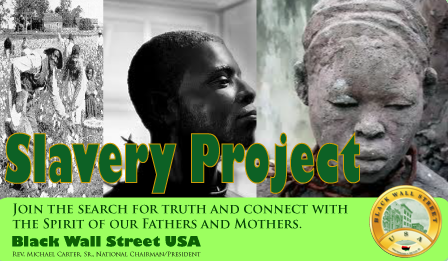
Alabama
Alaska
Arizona
Arkansas
California
Colorado
Connecticut
Delaware
Florida
Georgia
Hawaii
Idaho
Illinois
Indiana
Iowa
Kansas
Kentucky
Louisiana
Maine
Maryland
Massachusetts
Michigan
Minnesota
Mississippi
Missouri
Montana
Nebraska
Nevada
New Hampshire
New Jersey
New Mexico
New York
North Carolina
North Dakota
Ohio
Oklahoma
Oregon
Pennsylvania
Rhode Island
South Carolina
South Dakota
Tennessee
Texas
Utah
Vermont
Virginia
Washington
West Virginia
Wisconsin
Wyoming
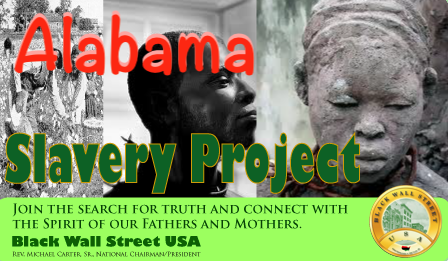
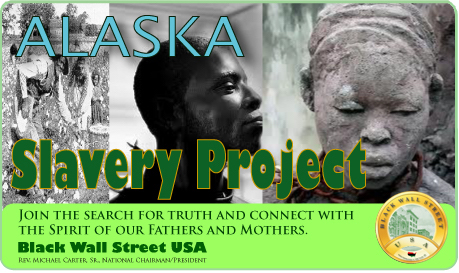



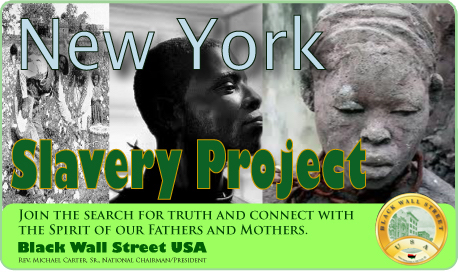

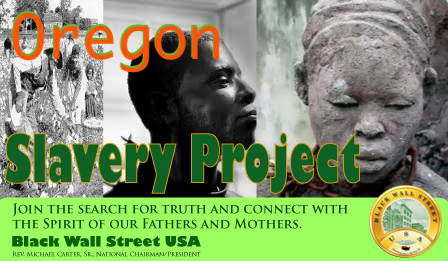
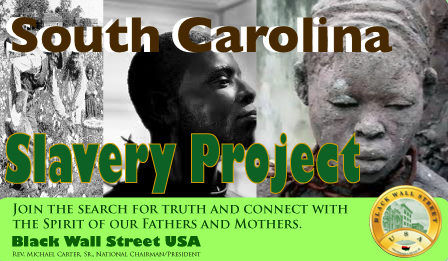
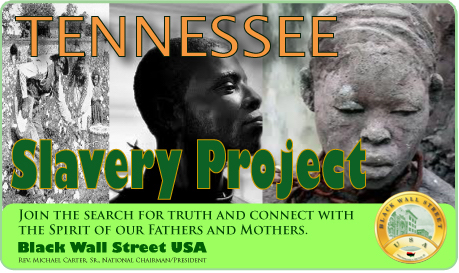
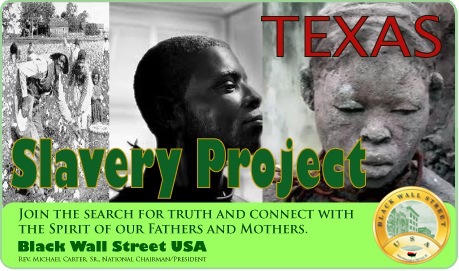



BlackWallStreet.org

Slave Records By State
See: Slave Records By State
Freedmen's Bureau Records
See: Freedmen's Bureau Online
American Slavery Records
See: American Slavery Records
American Slavery: Slave Narratives
See: Slave Narratives
American Slavery: Slave Owners
See: Slave Owners
American Slavery: Slave Records By County
See: Slave Records By County
American Slavery: Underground Railroad
See: American Slavery: Underground Railroad


